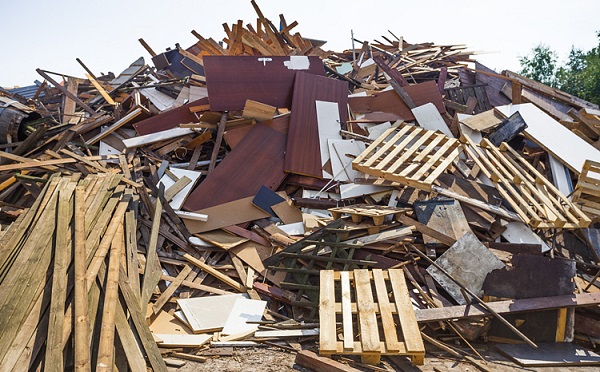
The forest industry in Nigeria contributed significantly to local and international trade between the ’60s and ’80s. The industry, which includes both the informal and formal wood products manufacturing outfits such as the pulp and paper mills, sawmills, ply mills, particles board mills and furniture factories contributed significantly to foreign exchange earnings locally. Unfortunately, since the ’90s, a number of factors have combined to limit the sustainable development of the industry. These include the thinning availability of economic wood species, the increasing dependence on outdated equipment and the technology employed by the numerous small-scale processors. All of these result in the generation of a high quantity of wood waste.
For instance, Lagos generates 294,979.9 tonnes per year of wood wastes while Abeokuta generates over 2,288 metric tonnes daily. In general, more than 140,000 metric tonnes of wastes are generated in Nigeria daily by the wood industries, apart from the 60 per cent of the total trees felled which is left in the forests after harvesting and transportation.
The wastes cause considerable environmental and health hazards. Most of the wastes are burnt and release harmful pollutants into the atmosphere. In addition, chemicals such as polycyclic aromatic hydrocarbons (PAH) and dioxin used to treat wood are carcinogenic and the wastes dumped into the environment decompose and emit methane gas in addition to causing blockage and flooding during the rainy season.
In view of the above, there is need to institute wood waste management principles, streamline wood waste production and promote their recovery and recycling in Nigeria. Studies carried out by the Raw Materials Research and Development Council (RMRDC) have revealed that investments in tree production will yield more if the total tree utilisation concept is practiced locally. Most of the large-scale wood processing outfits established by government in the ’60s to ’70s in the country have closed operation and the numerous small-scale operators in the industry that utilise outdated equipment and technology mostly lack the facilities for wood wastes’ utilisation. Most operators have low technical skills and capital input. Their technical efficiency falls below 60 per cent and require 88 per cent cost saving devices to become efficient producers.
Speaking to Science Nigeria, Mr. Sunday Okpe, a member of the Manufacturers Association of Nigeria (MAN), said the ability of any economy to adapt and become more climate change-resilient, resource use-efficient and competitive depends on the level of eco-innovation. In Nigeria, lack of incentives for wood wastes’ utilisation, insufficient information on economic benefits of wood wastes processing, poor enforcement of environmental regulations and a lack of policies for wood wastes management all inhibit sustainable wastes utilisation and management.
“As of today, more than 80 per cent of the population depends on wood biomass for their domestic energy generation. This practice leads to acute deforestation. Available statistics indicate that the forest estate in Nigeria is less than 6 per cent of the land area, while the total volume of useable wood down to 30cm cutting diameter in the forest resources is 437,507,205cm3,” he said.
Okpe opined that, as a result, urgent steps must be taken to curtail the use of wood for domestic energy generation. Globally, there is a growing awareness on the utilisation of wood wastes in form of briquettes and pellets as domestic or industrial fuel.
He said the use of wood wastes to produce energy opens up opportunities for sustainable energy production locally. Also, it will open up avenues for the substitution of wood wastes biomass for fossil fuels and development of industries producing bio-based products.
“According to FAO, a mill or an integrated complex with a supply of hog fuel has several methods through which it can convert waste into useable energy. The range of combustion systems available is considerable and the choice of equipment is available for each category. Among the major combustion processes that can be adopted in Nigeria are fire tubes, water boilers, pile burners, suspension, cyclone burners and fluidised bed conductors. These can be operated on both large- and small-scale basis. They can be done manually or automated. More recently, significant advances have been made over the last few years in the design and manufacture of boilers and stove to improve the efficiency, reduce emission and increase conveniences associated with manually fed fire places. The efficiency of manually fed stoves and boilers is about 75 per cent compared to about 20 per cent for the typical open fire.
“The efficiency of automatically fed boilers is about 85 per cent. The boilers are available in a wide range of sizes, from small domestics to large commercial industrial systems. Also, wood fuel electricity generating stations burn fuel to convert water into steam at high temperature and pressure. The steam can be used to drive turbine engines which, in turn, drive generators to produce electricity. In a combined heat and power plant, the heat resulting from power generation can be harnessed. The size of combined heat and power plant (CHP) is generally based on the available heat demand. The plants are now highly advanced and can be designed to use different forms of fuel,” he added.

Speaking in an exclusive chat with Science Nigeria, the director-general of RMRDC, Prof. Hussaini Ibrahim said the petroleum crisis of ’70s also led to renewed interest in wood bark utilisation as industrial raw material. He stated that the wood bark contains lipophilic and hydrophilic extractives which used to produce value added products in the chemicals, pharmaceuticals and cosmetic industries as substitutes for petroleum-based products.
In view of the above, in order to harness industrial application of wood wastes locally, he posited that the RMRDC has commenced investment promotion on the use of wood wastes for several applications.
“One of the major focuses of this initiative is the development of sawdust briquetting and pellets making machines. The council, in collaboration with some engineering outfits, designed and fabricated these machines which have been tested and patented. Mass production of the machines has been commissioned for deployment to some wood-processing clusters for commissioning and commercial utilisation.
“One of the major problems constraining the utilisation of locally available wood is that wood processors find it difficult to season wood to about 12 per cent moisture content or below. This problem has largely been solved by the development of wood seasoning kilns by RMRDC, in collaboration with Scientific Equipment Development Institute (SEDI) Enugu, a centre of NASENI and Palcon Nigeria Limited, also based in Enugu. Also, to expand industrial wood availability locally, the council is promoting industrial processing and production of bamboo locally. The council is collaborating with private sector investors to produce bamboo wall and floor tiles. To consolidate these efforts, the council is also collaborating with some private sector investors like Gamla Nigeria Limited in Asaba to establish bamboo plantations and plantations of indigenous economic hardwoods species such as Khaya senegalensis, etc, required in the wood industry in the country,” he said.
The RMRDC boss said the council is also collaborating with the New Material Nigeria Company Limited a member of the China National Building Materials Group (CNBM), wholly owned by the government of China, to introduce a new, innovative construction material known as fibre cement board into the Nigerian market.
“This makes Nigeria the first country outside China where an alternative to gypsum board is being manufactured. The fibre cement board is resistant to weather, water and fire. It is sound-proof, shatter- resistant, flexible, termite-resistant and cost lesser than bricks. The fibre cement board is made out of a composite of cement, cellulose fibres, quartz stones and sand. They are used for walls, partitioning (internal wall partitioning and exterior wood cladding), roofing and flooring, as good insulators of heat and sound and are preferred to the solid cement block or bricks commonly used.
“In the same vein, the Forestry Research Institute of Nigeria (FRIN) has developed the technology for manufacturing floor tiles, wall tiles including ceiling boards on commercial basis. The latest development in wood waste utilisation at FRIN is the application of lamination techniques where saw dust-cement boards and veneers are bonded into bands called ‘SP-panels’. Also, the institute is using wood waste in various forms to produce a variety of laminated products which are being used to produce products such as flower vases, bowls, etc.
“For these initiatives to be maintained and sustained, the government must create appropriate means for delineation and implementation of research results. In addition, there is need for a policy that will enhance private-sector participation in the commercialisation of these research efforts,” he added.


